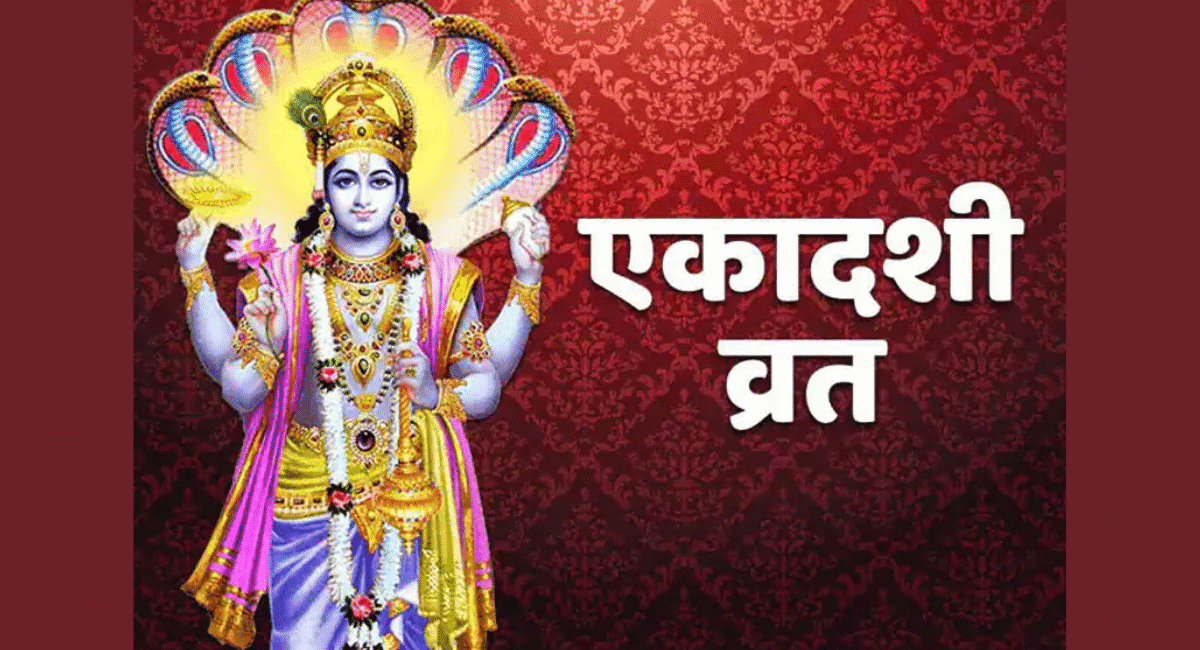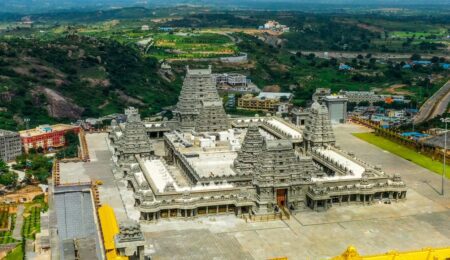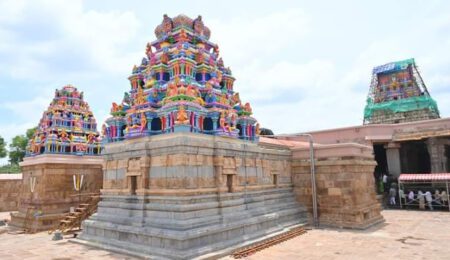What is Ekadashi Fasting and Why is it Important?
Fasting holds a significant place in Hindu traditions, and among various fasting days, Ekadashi is regarded as one of the most auspicious and spiritually rewarding. Observed on the eleventh day (Ekadashi) of each lunar fortnight, this fast is celebrated twice a month during the waxing (Shukla Paksha) and waning (Krishna Paksha) phases of the moon. Ekadashi fasting is not just a ritual; it is a sacred practice believed to purify the mind, body, and soul.
In this article, we will explore the meaning of Ekadashi, its types, spiritual and health benefits, rituals, Ekadashi katha, and its relevance in modern life, while also sharing the key rules to observe it correctly.
Meaning of Ekadashi
The word Ekadashi is derived from Sanskrit, where “Eka” means one and “Dashi” means ten. It refers to the eleventh day of each lunar phase, making it occur twice a month. According to Hindu scriptures, Ekadashi is dedicated to Lord Vishnu, the preserver of the universe, and observing this fast helps devotees cleanse their sins and progress toward spiritual upliftment.
Ekadashi is often considered a gateway to spiritual discipline, as it promotes self-control, detachment from material desires, and deeper connection with divinity.
Spiritual Importance of Ekadashi Fasting
- Attainment of Moksha (Liberation): Hindu texts mention that observing Ekadashi with devotion leads to liberation from the cycle of birth and death.
- Cleansing of Sins: It is believed that fasting on Ekadashi cleanses past sins and negative karma.
- Devotion to Lord Vishnu: The day is marked by worship, chanting Vishnu mantras, and reading Ekadashi katha to seek divine blessings.
- Mind Purification: Ekadashi vrat helps develop a calm, focused, and pure mind.
- Spiritual Progress: Regular observance strengthens one’s discipline, willpower, and devotion.
Health Benefits of Ekadashi Fasting
Apart from its religious significance, Ekadashi fasting offers scientifically recognized health benefits, such as:
- Detoxification of the Body: Abstaining from heavy foods helps cleanse the digestive system.
- Improved Digestion: Light or fruit-based meals give the stomach a rest.
- Enhanced Mental Clarity: Reduced food intake can improve focus and calmness.
- Weight Management: Intermittent fasting, like Ekadashi, supports fat metabolism.
- Boosted Immunity: Fasting stimulates the body’s natural healing mechanisms.
Types of Ekadashi
There are 24 Ekadashis in a normal lunar year and 26 during a leap year. Each Ekadashi carries its own significance and associated katha. Some of the major Ekadashis include:
- Vaikunta Ekadashi – Opens the gates of Vaikuntha (Lord Vishnu’s abode).
- Nirjala Ekadashi – The most austere, observed without food or water.
- Mokshada Ekadashi – Grants liberation to ancestors’ souls.
- Devshayani (Ashadhi) Ekadashi – Marks the beginning of Chaturmas (four holy months).
- Putrada Ekadashi – Bestows blessings for progeny.
- Utpanna, Papmochani, Aja, Kamada, Vijaya, and more…
Each Ekadashi has a unique vrat katha (story) narrated in ancient scriptures like the Padma Purana and Skanda Purana.
Ekadashi Vrat Rules
To gain the full spiritual and health benefits of Ekadashi, devotees follow certain rules:
- Fasting:
- Strict fast: No food, water, or grains.
- Partial fast: Fruits, milk, and water are allowed.
- Avoid grains, cereals, beans, and certain vegetables (like onions and garlic).
- Purity and Cleanliness: Take a bath early morning, wear clean clothes, and maintain mental purity.
- Devotion: Chant Vishnu mantras, read Vishnu Sahasranama, or sing bhajans.
- Parana (Breaking the Fast): Ekadashi fast is broken on the next day (Dwadashi) after sunrise and before the end of Dwadashi tithi.
Ekadashi Katha (The Divine Story)
One popular katha is linked to Lord Vishnu and the demon Mura. According to the Padma Purana, a fierce demon named Mura once terrorized the heavens. Lord Vishnu engaged in a long battle but decided to rest for a while in a cave. During His sleep, a divine female energy emerged from His body and killed the demon Mura. Lord Vishnu, pleased with her devotion and courage, named her Ekadashi. He blessed that anyone who observed a fast on this day and worshipped Him would be free of sins and attain His abode.
This story signifies that Ekadashi symbolizes the victory of righteousness over negativity.
Rituals of Ekadashi Fasting
- Pre-Fasting Preparations:
- Avoid heavy or tamasic food (meat, onion, garlic) a day prior (Dashami).
- Chant the name of Lord Vishnu before sleeping.
- On the Day of Ekadashi:
- Wake up before sunrise, bathe, and wear clean clothes.
- Offer prayers, tulsi leaves, and flowers to Lord Vishnu.
- Observe fasting as per capacity (nirjala, phalahar, or partial).
- Evening Rituals:
- Visit a Vishnu temple or perform puja at home.
- Read Ekadashi vrat katha.
- Engage in bhajans and meditation.
- Breaking the Fast (Parana):
- Perform parana on Dwadashi morning with light sattvic food.
- Offer food and charity to Brahmins or the needy.
Modern-Day Relevance of Ekadashi
In today’s fast-paced lifestyle, the essence of Ekadashi fasting is more relevant than ever:
- It promotes mindfulness in eating and develops healthy eating habits.
- Helps in mental detoxification amidst stress and distractions.
- Encourages charity and community service.
- Acts as a spiritual pause button, reminding us to connect with our inner self and divinity.
Even those who cannot follow traditional strict fasting can adapt by eating light, avoiding grains, and dedicating the day to meditation and good deeds.
Frequently Asked Questions (FAQs)
1. What is the significance of Ekadashi fasting?
Ekadashi fasting purifies the mind, body, and soul. It helps remove sins, offers spiritual upliftment, and is considered highly pleasing to Lord Vishnu.
2. Can I drink water during Ekadashi fast?
Yes, unless you are observing Nirjala Ekadashi, where even water is avoided. Most people keep a phalahar fast with fruits and water.
3. Who can observe Ekadashi fasting?
Anyone, irrespective of age or gender, can observe Ekadashi fasting as per their health and capacity. Pregnant women and patients should consult a doctor.
4. What foods are avoided on Ekadashi?
Grains, rice, beans, and certain vegetables like onions, garlic, and leafy greens are generally avoided.
5. What is Ekadashi katha?
Ekadashi katha refers to the mythological stories narrated for each Ekadashi, explaining its origin and significance.
6. How many Ekadashis are there in a year?
There are 24 Ekadashis in a normal year and 26 in a leap year.
7. Is Ekadashi fasting only for religious people?
No, even non-religious individuals observe Ekadashi for its health benefits, discipline, and mental peace.
Conclusion
Ekadashi fasting is more than a ritual it is a powerful spiritual practice that brings harmony to the mind, body, and soul. Whether observed for religious devotion or holistic health, Ekadashi offers a path to discipline, purity, and divine blessings.
By following Ekadashi vrat rules, understanding its katha, and observing it with faith and sincerity, anyone can embrace the profound benefits of this sacred day.




Leave a Comment